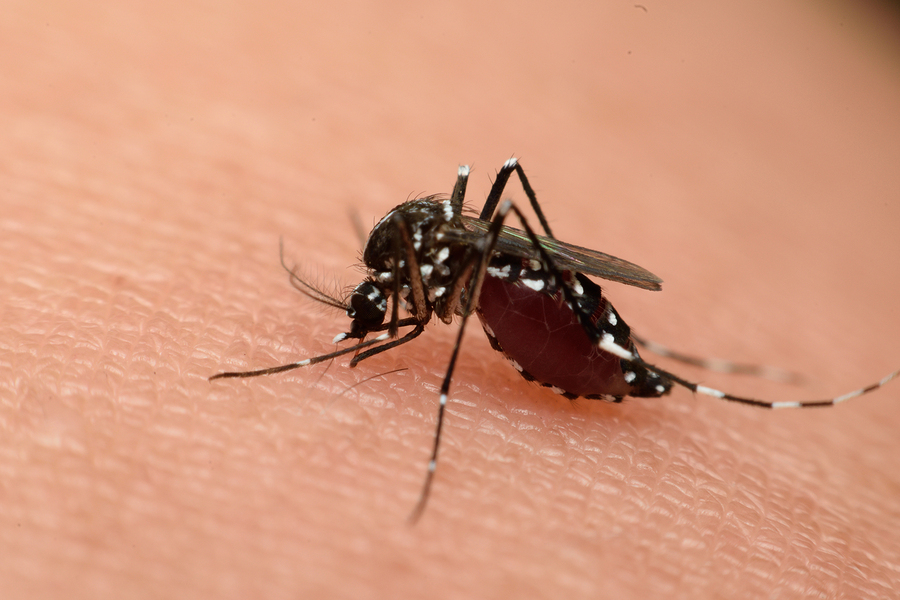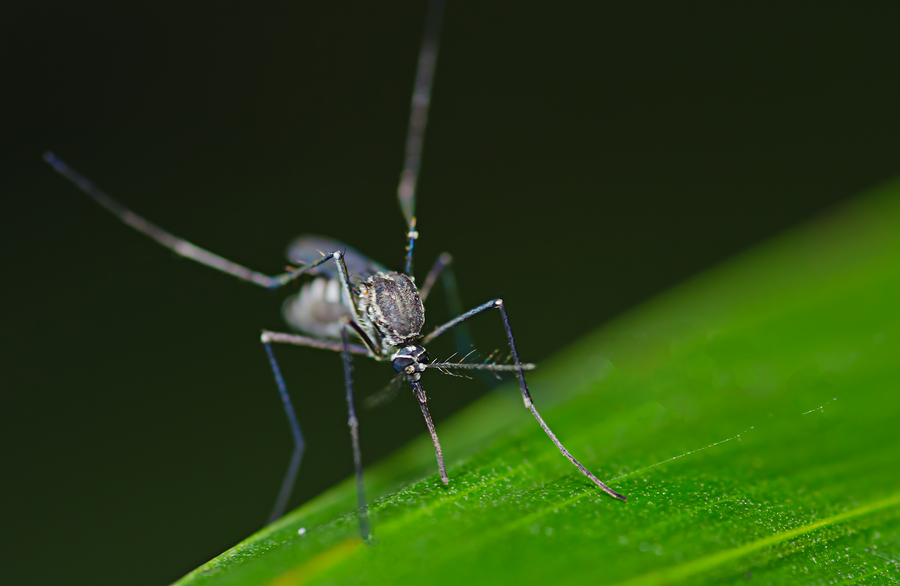- Make It Yourself Lavender Heart-Shaped Bath Bombs!
- 20 Things You Never Knew About “Down There”
- 12 Best Foods For Those Suffering From Arthritis Pain
- 12 Personal Hygiene Mistakes Almost Everyone Makes (Mom Never Told You About #4!)
- 15 Medicinal Plants And Herbs From The Cherokee People
- 12 Mind-Blowing Benefits Of Drinking Coconut Water During Pregnancy
- 12 Outstanding Winter Foods That Won’t Fatten You Up Like A Christmas Turkey
How Did Something This Tiny Become One Of The World’s Most Efficient Killers

Photo credit: bigstock.com
Someone once said that everything on earth kills, one way or another. This might be true, but there is one stalker on this earth that is more deadly than most. If it doesn’t kill you outright, it passes on horrible diseases, some of which cannot ever be completely cured. It dines almost exclusively on humans, even though it doesn’t travel very far in its lifetime. It can sit on something as small as your fingernail and yet, it has tormented humans since the beginning of time, been the plague of most military excursions, and has wiped out the population of entire cities.
Although there are literally thousands of species that live on this earth, few have been as relentless and deadly as the Aedes Aegypti mosquito. Yes, we are talking about a simple mosquito. This tiny insect has been the root cause of the spread of numerous epidemics which have spread across the world including yellow fever, dengue fever, Chikungunya, and Zika.
This annoying pest is actually one of the most efficient killers anywhere in the world. It was the Aedes mosquito that caused an outbreak of yellow fever in the 1890’s that actually caused the French to throw in the towel when they were constructing the Panama Canal. During the Spanish-American war, it sickened more people than the war killed. This one little mosquito was the culprit behind the yellow fever outbreak in the 19th century that occurred in New Orleans and Memphis. As of today, this little bugger infects about 20 million people each year with dengue fever.
How did this little mosquito turn into such an efficient killer through the transmission of diseases and why is it such a threat to humans?
Part of the explanation lies in its biology. The other part is in this mosquitoes almost unbelievable ability to change and adapt.
First, this type of mosquito is found in parts of the world that half of all humans call home. It has evolved over the years to thrive and breed in the places where humans live. It seems as if the more densely populated an area is, the better this mosquito likes it. This insect has learned how to breed in the tiniest spots including things like bottle caps, depressions in cement, and the water underneath potted plants. They breed in the drainage pipes such as in showers, toilets, and even your your dog’s water bowl! However, what most people don’t know is that the larvae have evolved to the point where they don’t even necessarily need water to survive. The eggs can lay dormant for up to one year, sometimes more, and then they hatch once they are underwater. The eggs can “glue” themselves to just about everything and anything including the edges of a birdbath, an old tin can, old tires, or anything that might hold water.
Continue to Page 2

Photo credit: bigstock.com
Like cockroaches, these insects have evolved and learned about human behavior and habits over the past 15,000 to 20,000 years. The WHO even describes Aedes Aegypti mosquitoes as being “opportunistic”. They learn and adapt to their environment and exploit any and every opportunity.
Females are the only ones who bite humans and generally lay between 100 and 200 eggs after each meal! Read that again. We aren’t talking about hundreds of eggs in their lifetime, this is after every single bite!
Aegypti’s are perhaps Mother Nature’s most perfect killing machine. Females drink blood to provide the protein necessary for their eggs. So when this mosquito takes a bite out of an infected person, the blood travels to the mid-gut. For many species of mosquitoes, this is where the virus would remain, stuck in the mosquito. However, the Aegypti has what is called “vector competence”. This means that the virus is able to duplicate itself inside the mosquito and it finds its way back to the salivary glands of the mosquito. This takes only a few days. Once the virus reaches the salivary glands, the mosquito then passes on the virus to the next person it bites.
So, biologically speaking, this type of mosquito is a very competent vector. It is also an incredibly active one. Unlike other species that like to hunt from dusk until dawn, the Aegypti are known for being very aggressive daytime feeders. They have no problem hiding in closets, under beds, in the folds of curtains, and other shady places. These insects are also sip feeders, which means that they don’t stay on one person and suck until they are full, they take a quick bite, a few gulps, and then move on. Often times, the mosquito is already long gone by the time you even realize that you were even bitten. Experts also say that this mosquito has learned to perform sneak attacks by flying up from behind to bite ankles, elbows or the back of the neck.
This mosquito also does not have a powerful bite, so most people do not even know that they were bitten. They fly up behind you, bite your ankle or lower leg, take a sip, and then move on to someone else. This is a great survival technique, but it also means that they are capable of spreading disease to dozens of people every single day.
These little insects got away with causing so much damage and killing for a long time. It wasn’t until the early 1900’s that researchers even discovered that yellow fever was being spread by mosquitoes. Although humans finally declared war on the Aedes Aegypti, we have had limited success. In the late 1940’s and 1950’s, one aggressive campaign led to the almost complete extinction of this mosquito in about 18 South American countries. Unfortunately, they used DDT to accomplish this, which probably caused more damage and suffering than the mosquito could ever do, especially to birds.
Continue to Page 3

Photo credit: bigstock.com
Now, many species of mosquitoes have developed a resistance to many insecticides. The Aedes Aegypti is back with a vengeance! And with it, many diseases such as dengue fever. There is now a vaccine for yellow fever, but not dengue fever or Zika.
When you think about it, this means that we have been trying to kill off these little disease spreading plague for almost one hundred years! The mosquitoes have learned and adapted. Have humans?
We are trying. The World Health Organization has encouraged countries hit hardest with Zika and dengue to try genetically engineered mosquitoes to help curb the massive problem of Aedes Aegypti mosquito.
Yes, there are other types of mosquitoes that spread disease but most of them are under at least partial control. As dengue fever and Zika continues to spread throughout the Americas, and is now being found in other countries, health authorities are asking themselves, how do we fight back before this mosquito comes to our country, and how do we fight it where it lives now?
It is possible. Not cheap and not easy, but possible. Many feel that the best way to dramatically decrease the population is to release genetically modified (GM) mosquitoes. These will breed with wild mosquitoes, but their offspring are sterile. This means that just one generation later, the mosquitoes die off and leave no offspring behind. By using GM mosquitoes, you remove the dangers of using toxic poisons. Another option is to introduce male mosquitoes which carry the Wolbachia bacteria. This type of bacteria is found in about 60 percent of all insects and does not affect mammals, only insects. When infected, male mosquitoes breed with females and the resulting eggs are infertile.
READ ALSO: This One Natural Oil Is Just As Effective At Repelling Mosquitoes As DEET
Although mosquitoes are perhaps one of the earth’s tiniest and insignificant creatures, it still remains a fact that they can wreak havoc on millions of human lives.
References:
































